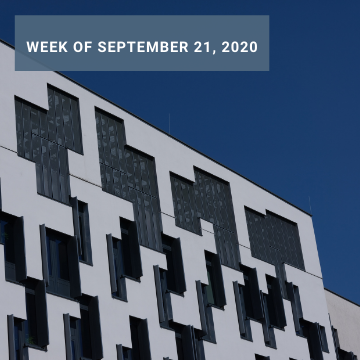Since 2018, the Generative Design in Minecraft (GDMC) competition challenges participants to push the limits of artificial intelligence and come up with realistic cities from scratch.
If you are unfamiliar with Minecraft (I doubt it), the cube-based video game lets players build all sorts of structures with almost absolute freedom. In other words, cubic freedom.
Participants must leverage a combination of various Artificial Intelligence techniques in Minecraft to level terrain, build roads and bridges and erect buildings. It is a very complex task involving everything from path-finding algorithms to machine learning, but it’s starting to come together.
Surely the technology is still years away, but it looks like city planners and designers will soon have a new digital partner for their construction projects.
Your future apartment building might well be designed by an AI architect. At least parts of it.
Racist Artificial Intelligence strikes again
And speaking of artificial intelligence I, yet another poorly trained algorithm has put yet another Internet giant in serious trouble. This time it was Twitter’s turn.
Have you ever wondered how the platform decides what parts of a picture to crop in preview mode? It is, of course, an image-cropping algorithm. Using a combination of tools, Twitter tries to prioritise faces and text, unless your face is black.
Ironically, the issue was discovered when a PhD student was trying to tweet about another racially-biased algorithm he had encountered on Zoom. The videoconferencing service had erased the image of his black colleague after failing to recognise his face. Twitter decided that wasn’t enough and erased his colleague from the screen capture too.
Although the company was quick to apologise for not testing the algorithm thoroughly enough, Twitter feeds quickly filled up with people doing experiments to test the flaw. Some even tried posting images of differently coloured dogs.
Time for lessons to be learnt.
Announcements from Microsoft Ignite
Microsoft has kickstarted its annual Ignite user-focused conference by announcing a series of additions to its cloud and productivity portfolios.
Teams is getting new security and compliance-related features, as well as a suite of new tools to help companies better support remote workers. The latter are mainly data insights to assess the overall wellbeing of employees, made available to users and managers to help them improve productivity and reduce burnout.
The company has also teased Virtual Commute, an upcoming Teams functionality aimed at helping workers unwind after a long day of work. Hmm, how about not being on Teams after working hours to start with?
Plans to expand Azure Stack’s hybrid cloud capabilities have also been announced. The platform lets businesses run public cloud-like workloads within on-premise data centres. Users will be now able to run and deploy containerized applications on the setup, while the Azure Stack Hub will incorporate GPU support for broader machine learning capabilities.


